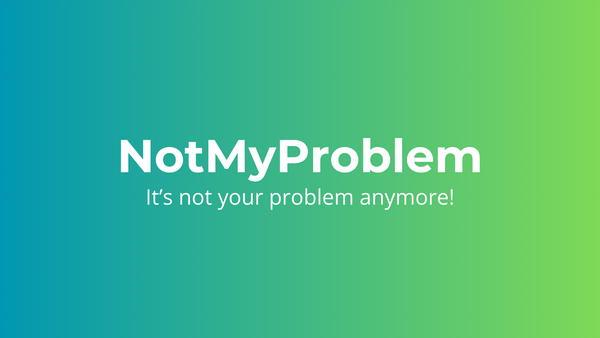Things I've learned when I learned ChatGPT

Have you ever heard of ChatGPT? It's an exciting new AI technology developed by OpenAI, and I've recently had the chance to explore all its amazing capabilities. Essentially, ChatGPT is a computer program that uses language models to understand and generate text, allowing it to converse with people in a natural way. It's like having a chatbot that's actually smart and doesn't just spit out pre-programmed responses!
In this blog post, I want to share with you some of the things I've learned while getting to know ChatGPT. Whether you're a tech enthusiast, a business owner, or just someone curious about the latest advances in AI, I think you'll find this post both informative and entertaining.
We'll start by taking a look at what ChatGPT is and how it works, then dive into some practical tips for using this tool effectively. I'll share some of the pitfalls I encountered along the way, and some of the surprising insights I gained about how to get the most out of ChatGPT.
So, buckle up and get ready to explore the exciting world of ChatGPT!
What is ChatGPT?
ChatGPT is an AI technology developed by OpenAI that uses advanced language models to understand and generate text. It's based on the GPT-3 (Generative Pre-trained Transformer 3) architecture and is trained on vast amounts of text data from the internet, making it a powerful tool for natural language processing.
At its core, ChatGPT is designed to converse with people in a way that's as close to human-like as possible. Unlike traditional chatbots, which rely on pre-programmed responses, ChatGPT uses its language models to generate responses in real time, based on the user's input. This means that ChatGPT can handle a much wider range of questions and conversation topics than a typical chatbot.
One of the things that makes ChatGPT unique is its ability to learn and adapt to different contexts. By training the model on specific sets of data, it can be fine-tuned to perform different tasks, such as generating content or answering customer service inquiries. This flexibility makes ChatGPT a versatile tool that can be used in a wide variety of business and personal settings.
In terms of how ChatGPT actually works, the basic process involves inputting text into the model and then generating a response based on that input. The model uses a series of neural networks to analyze the text and identify patterns and relationships between different words and phrases. It then generates a response based on that analysis, using a combination of text prediction and synthesis techniques.
Overall, ChatGPT represents an exciting new frontier in natural language processing and has the potential to revolutionize the way we interact with machines and each other.
My experience learning ChatGPT
Learning about ChatGPT has been an exciting and eye-opening experience for me. As someone who's always been interested in new technologies and AI, I was eager to dive in and see what this tool could do.
At first, I was blown away by the sheer scope and complexity of ChatGPT's language models. It was fascinating to see how the model could generate such a wide range of responses based on different inputs, and I spent hours testing out different prompts and conversation topics.
However, as I delved deeper into using ChatGPT, I also encountered some unexpected challenges and surprises. For example, I quickly realized that the tool works best when you give it clear and specific prompts. If you just let ChatGPT generate text on its own without any context or guidance, you're likely to end up with errors and mistakes that may be hard to spot for the author and reader alike.
I also discovered that prompts have to be engineered in a very specific way to get the outcome you actually want. This can take some trial and error, and it's important to spend time training the model on specific sets of data and fine-tuning it for different tasks.
Despite these challenges, I've found that ChatGPT can be an incredibly valuable tool for text extraction and as a writing companion. By giving it factual information and guiding it through specific prompts, I've been able to get consistently high-quality results that have helped me in my own writing and research.
Overall, my experience learning about ChatGPT has been a fascinating and rewarding journey. It's shown me just how powerful and versatile AI technologies can be, and has opened up a whole new world of possibilities for how we interact with language and information.
Tips for using ChatGPT effectively
As someone who has spent some time experimenting with ChatGPT, I have a few tips to share that can help you get the most out of this powerful tool:
- Keep your prompts clear and concise
One of the keys to getting accurate and relevant responses from ChatGPT is to provide clear and concise prompts. Be as specific as possible about what you're looking for and provide any relevant context that can help the model better understand you. - Train the model for better accuracy
To help ChatGPT generate more accurate and relevant responses, you can train the model by providing examples of the types of responses you're looking for. This will help the model better understand the nuances of the language and generate more accurate responses. - Fine-tune the model for specific tasks
If you're using ChatGPT for a specific project or task, consider fine-tuning the model to better suit your needs. This involves training the model on specific types of data or prompts that are relevant to your project, which can help improve its accuracy and relevance for your specific use case. - Double-check results
While ChatGPT can be a powerful tool, it's important to remember that it's not perfect. As I mentioned earlier, the model can sometimes generate inaccurate or even intentionally deceptive responses, so it's always a good idea to double-check the results and verify the information before using it. - Use ChatGPT with caution
Finally, it's important to be mindful of the potential risks of using ChatGPT. While it can be a valuable tool, it's important to use it with caution and be aware of the potential for inaccuracies or errors in the generated text.
Applications for businesses
ChatGPT can be a valuable tool for businesses in a variety of ways. Here are a few specific applications that could help improve operations and efficiency:
- Automating customer service
ChatGPT can be used to create conversational AI chat bots that can interact with customers and answer frequently asked questions. This can help to automate customer service, reduce wait times, and provide faster, more personalized support to customers. - Generating content
ChatGPT can also be used to generate content for marketing and advertising purposes. For example, it can be used to create product descriptions, social media posts, or even entire blog posts. This can save time and resources for businesses while still generating high-quality, relevant content. - Analyzing data
ChatGPT can be trained on large datasets and used to analyze and interpret data in new and innovative ways. For example, it could be used to generate insights from customer feedback or to identify patterns in sales data that might not be immediately obvious. - Enhancing business intelligence
ChatGPT can be used to generate reports, summaries, and other business intelligence insights that can help decision-makers understand and act on complex information. This can help businesses make more informed decisions and stay ahead of the competition. - Improving HR processes
ChatGPT can be used to automate certain HR processes, such as screening resumes or conducting initial interviews. This can save time and resources for HR departments and help to identify top candidates more quickly.
Overall, there are a wide range of potential applications for ChatGPT in the business world. By leveraging the power of natural language processing and AI, businesses can improve their operations, increase efficiency, and stay ahead of the curve in an increasingly competitive market.
Potential future developments
ChatGPT is a powerful technology that has the potential to revolutionize the way we interact with information and with each other. As the technology continues to develop, here are some possible future applications and developments to keep an eye on:
- Multi-modal learning
One area where ChatGPT could continue to develop is in multi-modal learning, which involves combining text, audio, and visual inputs to generate more sophisticated and nuanced responses. By combining these different modalities, ChatGPT could become even more adept at understanding and responding to human language. - Enhanced personalization
ChatGPT could also be used to develop more personalized experiences for users, such as by tailoring responses to individual preferences or learning from past interactions to create more customized content. This could be especially valuable in marketing and customer service contexts. - Deeper contextual understanding
As the technology improves, ChatGPT could become even better at understanding the nuances of language and the contexts in which it is used. This could lead to more accurate and sophisticated responses, as well as greater insights into the ways that people communicate and interact. - Collaboration and co-creation
ChatGPT could also be used to facilitate collaboration and co-creation between humans and machines. For example, it could be used to generate rough drafts of documents or proposals that humans could then refine and polish. This could help to streamline workflows and increase productivity. - Ethical considerations
As with any emerging technology, there will be important ethical considerations to keep in mind as ChatGPT continues to develop. One important area of focus will be ensuring that the technology is used responsibly and does not perpetuate biases or harm individuals or communities.
Overall, ChatGPT is a technology with tremendous potential for the future. By continuing to develop and refine this technology, we can unlock new possibilities for how we interact with information, each other, and the world around us.
Conclusion
In conclusion, learning about ChatGPT has been an exciting journey. We've explored what ChatGPT is and how it works, and looked at some of the ways it can be used effectively in a business context. We've also shared some tips on how to train the model, avoid common mistakes, and fine-tune it for specific tasks. Additionally, we've discussed some possible future developments and applications for this technology. As we move forward into the future, we can expect to see even more advances in the field of natural language processing and AI. For those who are interested, we encourage you to try out ChatGPT for yourselves and see the benefits it can bring to your work or personal projects.
Feel free to check the tool out here: chat.openai.com




